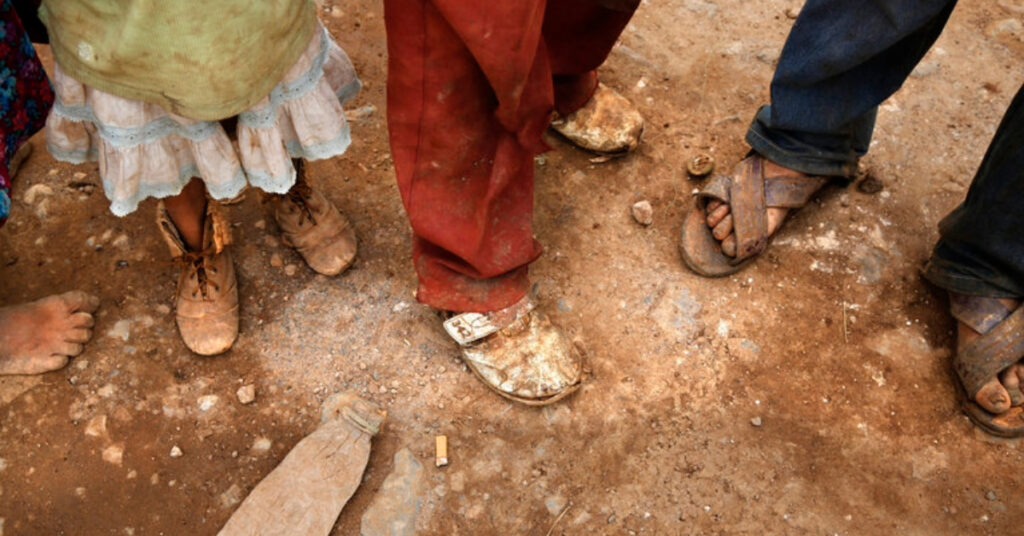The U.S. Department of Labor released a report Thursday highlighting alarming findings about child labor practices in Mexico, including the involvement of children in harvesting crops used for the production of drugs such as opium and heroin. The report, titled 2024: List of Goods Produced by Child Labour or Forced Labour and 2023: Findings on the Worst Forms of Child Labour, sheds light on the continued exploitation of children in both agriculture and various industries across the country.
“Many children are also involved in harvesting crops used for the production of substances – poppies for opium and heroin in Afghanistan and Mexico,” the report stated, underscoring the grave implications of child labor in drug-related agriculture. This revelation comes amidst growing concerns about the broader impact of child exploitation in Mexico and other countries.
The U.S. Department of Labor’s report also found that between 20% and 40% of children in Mexico, Colombia, South Sudan, and Sri Lanka are working in industries such as construction, which is known for its hazardous working conditions. In Mexico, child labor is also prevalent in the production of a wide range of agricultural goods, including tobacco, coffee, beans, chili peppers, cucumbers, eggplants, melons, onions, and tomatoes.
Aside from child labor, the report also highlighted cases of “forced labor” among adults in the cultivation of chili peppers and tomatoes, further intensifying concerns over labor exploitation in Mexico’s agricultural sector.
Child Labor Statistics in Mexico
The release of the report comes on the heels of alarming statistics from Mexico’s National Institute of Statistics and Geography (Inegi). In its 2022 findings, the autonomous institute reported that 3.7 million Mexican children aged 5 to 17 were involved in some form of labor, representing 13.1% of the total child population. This figure reflects a 1.7% increase compared to 2019, indicating a rise in child labor over recent years.
Of these children, approximately 2 million are engaged in dangerous work, with around 1.1 million involved in high-risk sectors such as agriculture, construction, mining, and chemical industries. These hazardous conditions raise significant concerns regarding the safety and welfare of young workers across the country.
Legal Framework and International Agreements
Mexican law, through the Federal Labor Law (LFT), prohibits all forms of labor for children under the age of 15. However, despite the legal framework, child labor remains a persistent issue, particularly in rural areas and among vulnerable communities.
Mexico is also a signatory to the United States-Mexico-Canada Agreement (USMCA), which has incorporated stricter labor laws aimed at eradicating child labor. As part of the agreement, Mexico, alongside its partners, has committed to abolishing child labor and forced labor. The report acknowledges Mexico’s efforts to prohibit the importation of goods made with forced child labor, in line with the USMCA commitments.
Progress and Challenges
Despite the concerning data, the report recognized Mexico’s strides in addressing child labor issues. Washington listed Mexico alongside Argentina, Chile, Colombia, Ecuador, and Moldova as countries making “significant progress” in eradicating child labor. Mexico’s efforts, particularly in enforcing labor laws and creating programs to support vulnerable children, have been noted as substantial.
One of the key initiatives highlighted in the report is the ‘Benito Juárez’ scholarship program, which was introduced by President Andrés Manuel López Obrador. This initiative has provided financial support to 10 million students across the country, offering them greater access to education and reducing their likelihood of entering the workforce at a young age.
A Global Issue with Local Impact
The exploitation of children in drug-related agriculture, as well as in other sectors, underscores the broader issue of child labor, which remains prevalent in developing nations. The report’s findings serve as a reminder of the ongoing need for stronger enforcement of labor laws and increased international cooperation to address these challenges.
While Mexico has made progress, there remains much work to be done. The involvement of children in the harvesting of crops used in the production of illicit drugs not only exposes them to dangerous work but also places them in precarious environments that can perpetuate cycles of poverty and exploitation.
